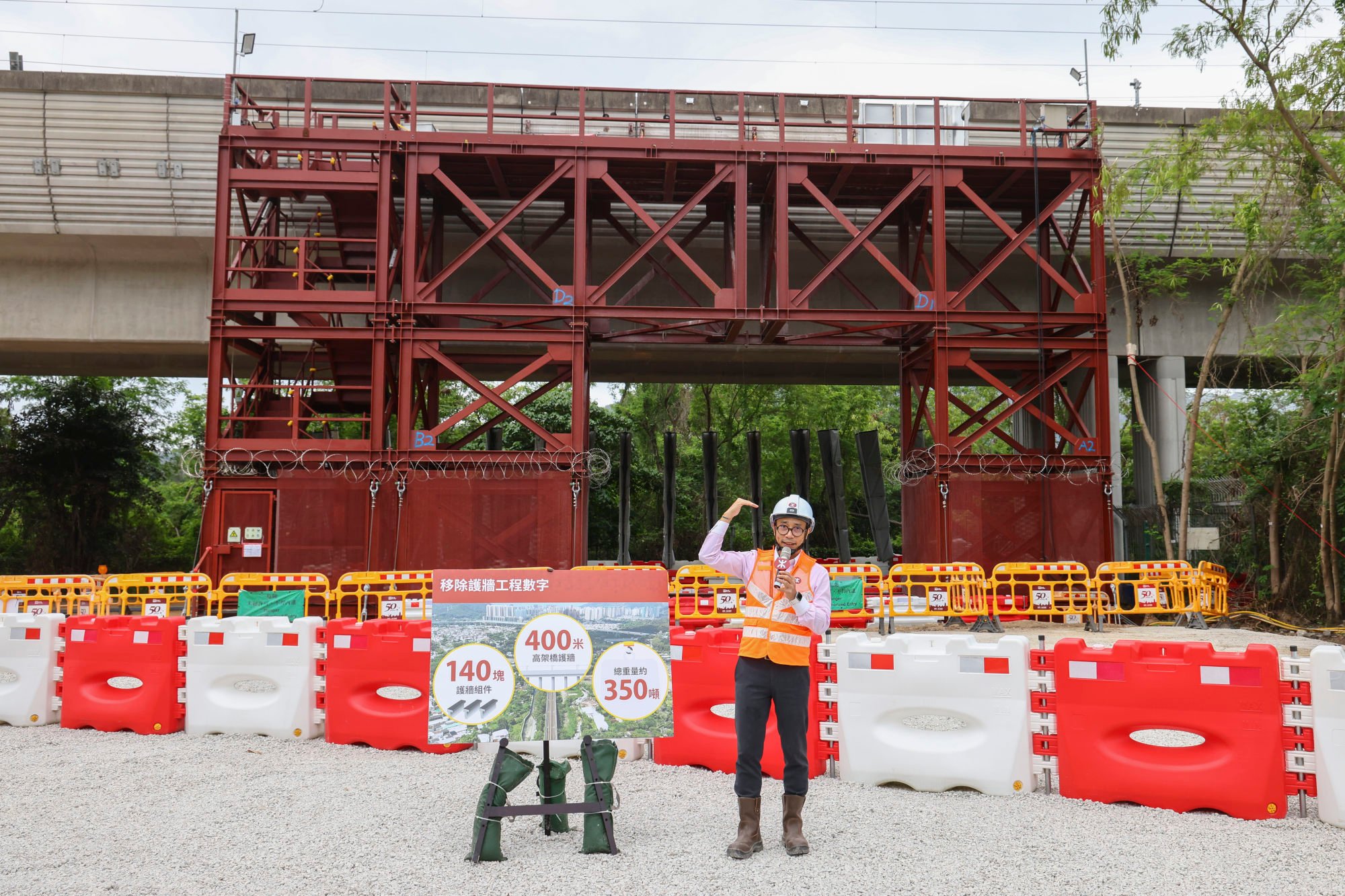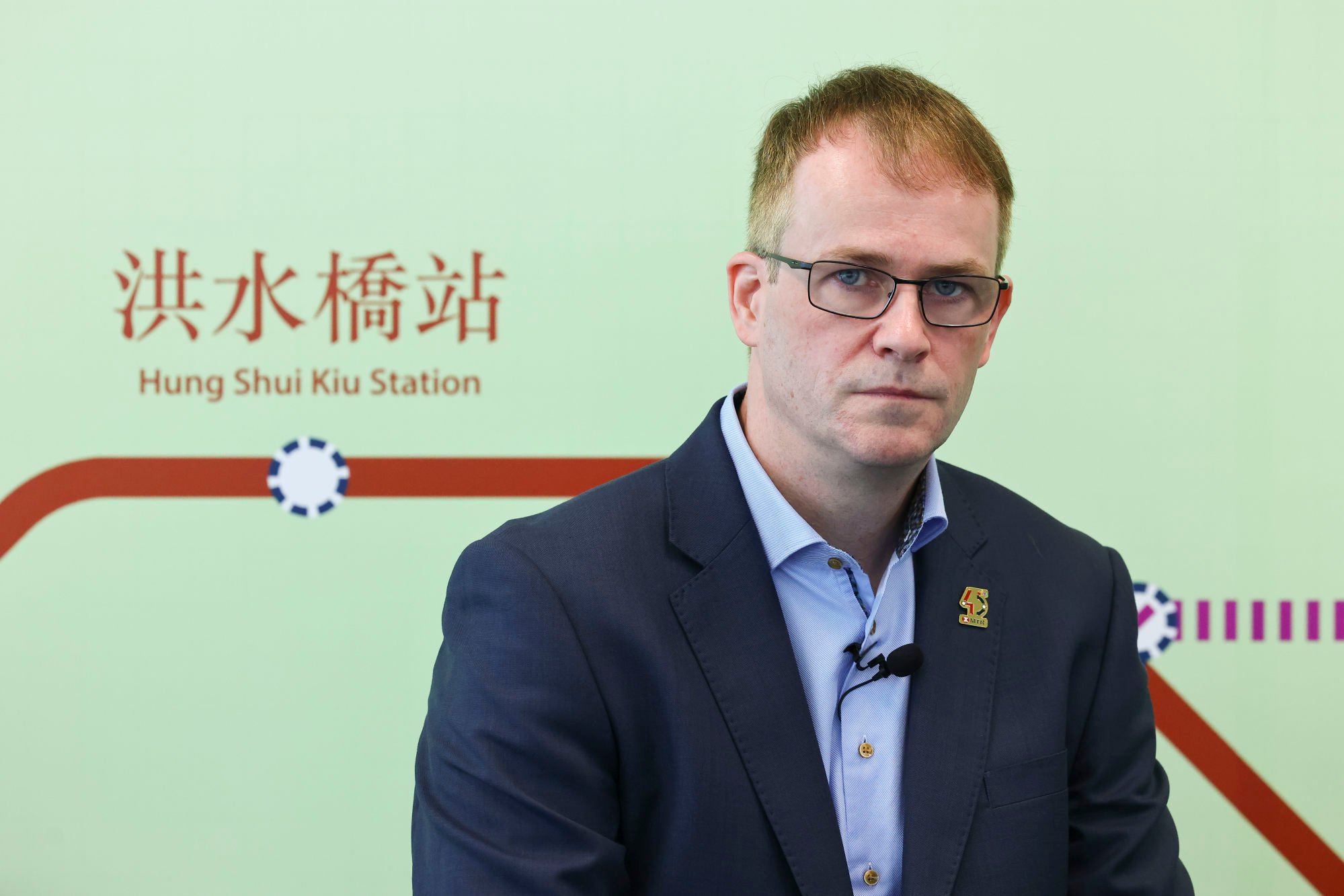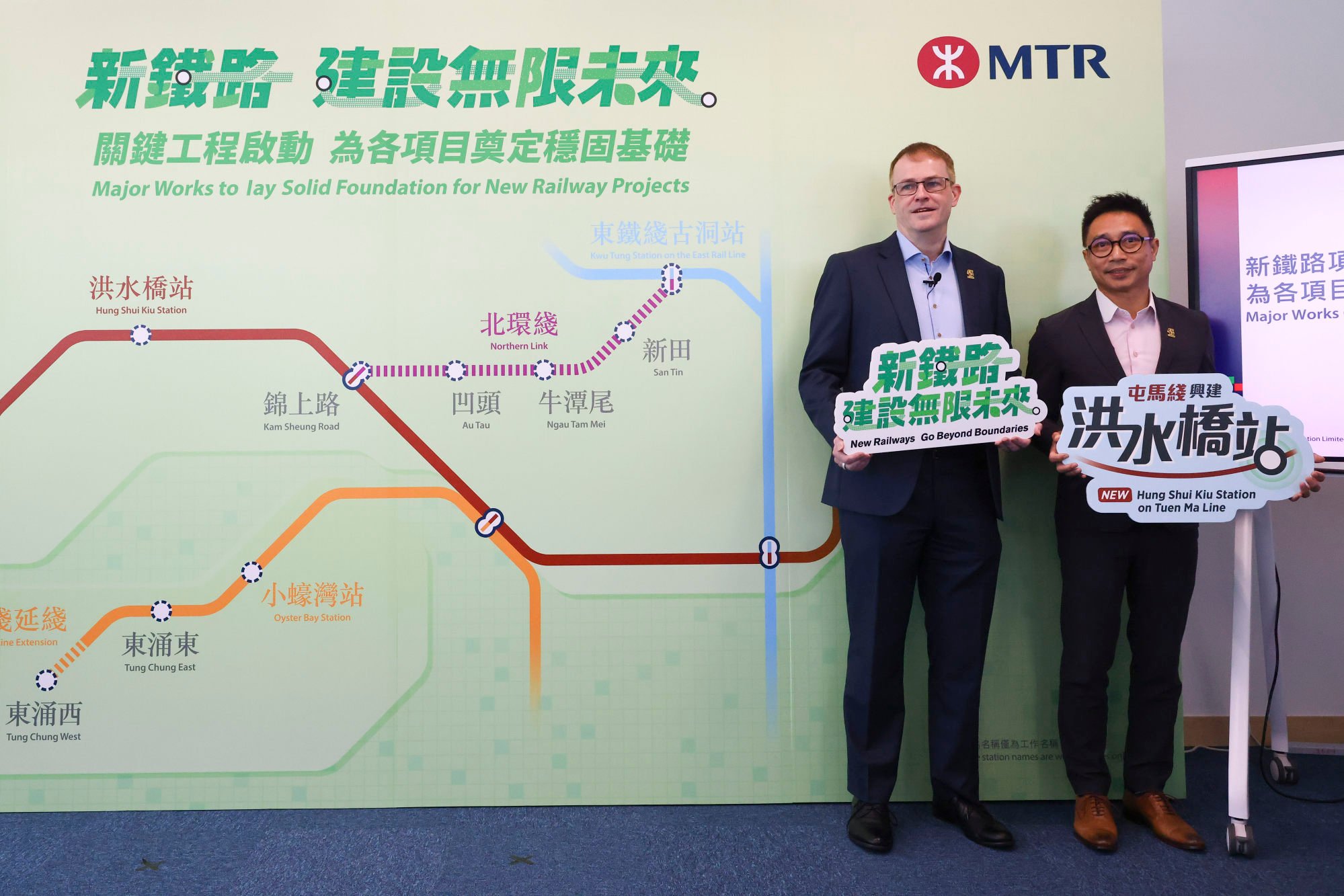
Hong Kong’s MTR Corp expects to complete 6 projects in coming decade to connect new development areas such as Northern Metropolis
- Rail operator unveils timeline of between three to 10 years for projects including line extensions and new stations across Tuen Ma, Tung Chung and East Rail lines
- Improved connectivity set to benefit residents in Northern Metropolis, offering alternatives to sometimes lengthy road commutes
Other projects under way included additions to the Tung Chung line on Lantau Island and the Tuen Ma line, with the latter project known as the Tuen Mun South extension. The MTR Corp was also working on building Kwu Tung station on the East Rail line and Oyster Bay station on the Tung Chung line.
Construction of the four projects began last year and is expected to be completed between 2027 and 2030.

The operator also said it would begin building the Northern Link next year and wrap up construction in 2034. The rail link will connect the Tuen Ma line and the Lok Ma Chau spur line on the East Rail line, part of a development to eventually form a loop joining up parts of the New Territories and Kowloon.
“Upon operation, we will further extend the reach of the Hong Kong railway network, facilitating the growth of these communities and a smart city,” said Carl Devlin, the MTR Corp’s capital works director.
Project manager Walter Lam Wai-tak said the new Hung Shui Kiu station would be the first in the city to be built on an operating viaduct, connecting the current Tin Shui Wai and Siu Hong stations on the Tuen Ma line.
He said the station structure would be added to the existing viaduct, adding preparation works were under way including the removal of 140 parapet components, while maintaining normal services on the rail line.
He also noted that other alternation and addition works were being carried out, including adjusting overhead lines, relocating electrical and mechanical equipment, and installing temporary fencing, as well as lighting and directional signs.
Sound barrier equipment was also installed before the parapet segments were cut to minimise the impact of noise on nearby residents, he added.
Lam stressed that conducting work only during the two non-traffic hours for two to three nights a week was a significant challenge.
“Most of the processes have to be done within the two non-traffic hours after a day’s train service closes,” he said.

But Lam said the project was planned to be completed in 2030 in time for the first batch of residents to settle in the new development area.
The MTR Corp earlier said the Hung Shui Kiu station’s estimated cost was about HK$4.1 billion (US$524.6 million).
The government granted the rail operator authorisation to construct the Hung Shui Kiu station in March.
As an intermediate stop between the stations at Tin Shui Wai and Siu Hong, it will primarily serve the future Hung Shui Kiu-Ha Tsuen new development area in the western part of the Northern Metropolis, offering an alternative transport choice for residents.
The Northern Metropolis is expected to provide half a million flats for 2.5 million residents and establish a new commercial area along the border with mainland China dedicated to helping the city become an innovation and technology hub.
The commute via road between the new development area and the Tin Shui Wai or Siu Hong stops currently takes about 20 to 25 minutes during peak hours, which will be shortened to about four minutes by rail thanks to the new stop, according to authorities.
Devlin also said that the first full year of the new projects’ major construction was 2024.
Besides the work at Hung Shui Kiu station, other projects included cable diversion and piling works at the Oyster Bay station, and turnout installation, track diversion and tunnel boring at the Tung Chung line extension.
A large-scale excavation was under way at Kwu Tung station, while piling and foundation works along the Tuen Mun River would begin soon for the Tuen Mun South extension, he said.
He noted that most of the new railway projects involved construction at operating rail lines.
“It is important while we’re pushing forward these works as scheduled that we minimise the interruption to normal train services as far as practicable and make sure the trains operate safely at all times,” he said.
“Project teams are working very hard to deliver the projects on time and within our budgets.”

The company said the projects were expected to provide more than 20,000 railway construction-related jobs.
Lawmaker Michael Tien Puk-sun called on the government to set up a rail authority as he said the corporation would face “a big challenge” in coping with several projects at the same time.
“Where does the funding of these new projects come from? It will put a huge financial pressure on MTR,” said Tien, the former chairman of Kowloon-Canton Railway Corporation.
“It will also jack up its debt levels because it has to cover construction costs upfront, and it may take 10 years to recover the costs from the government, which may give it land in the future to offset the costs.”
Lawmaker Gary Zhang Xinyu said the rail operator currently was responsible for all the aspects of new projects, from design, construction and delivery to operation and maintenance, which could put huge financial pressure on it.
Zhang, who used to work as an operations manager at the MTR Corp, called on authorities to consider inviting more players to handle different stages of the future projects to disperse financial pressure and risks.

